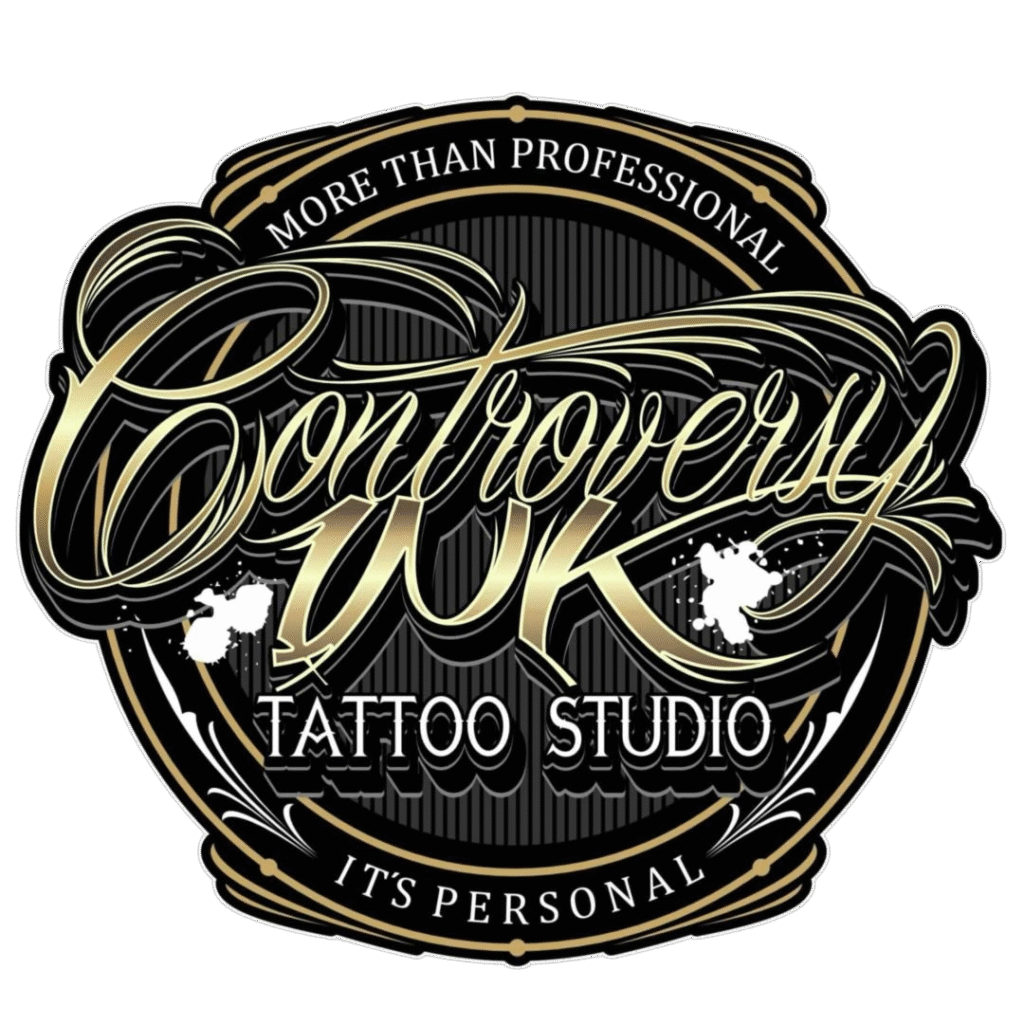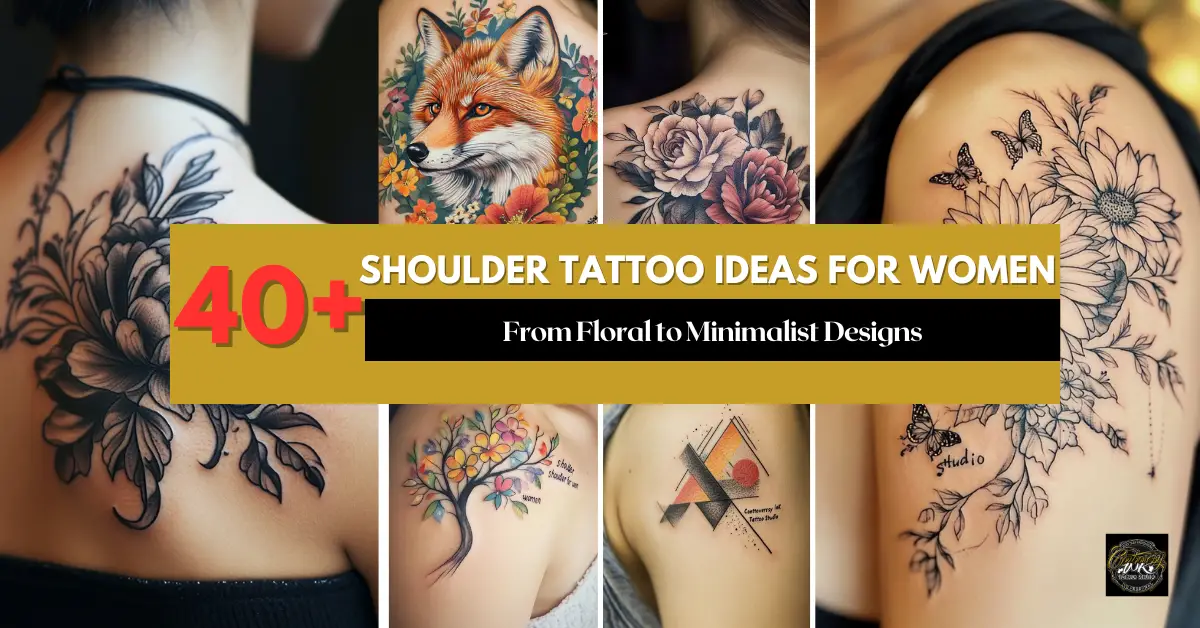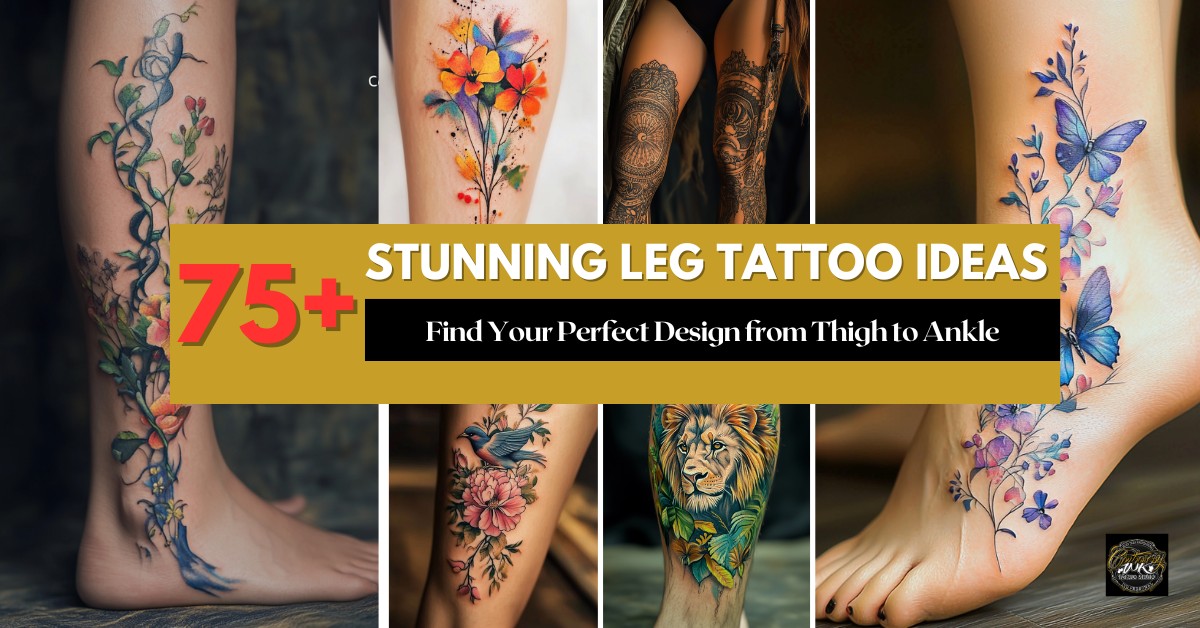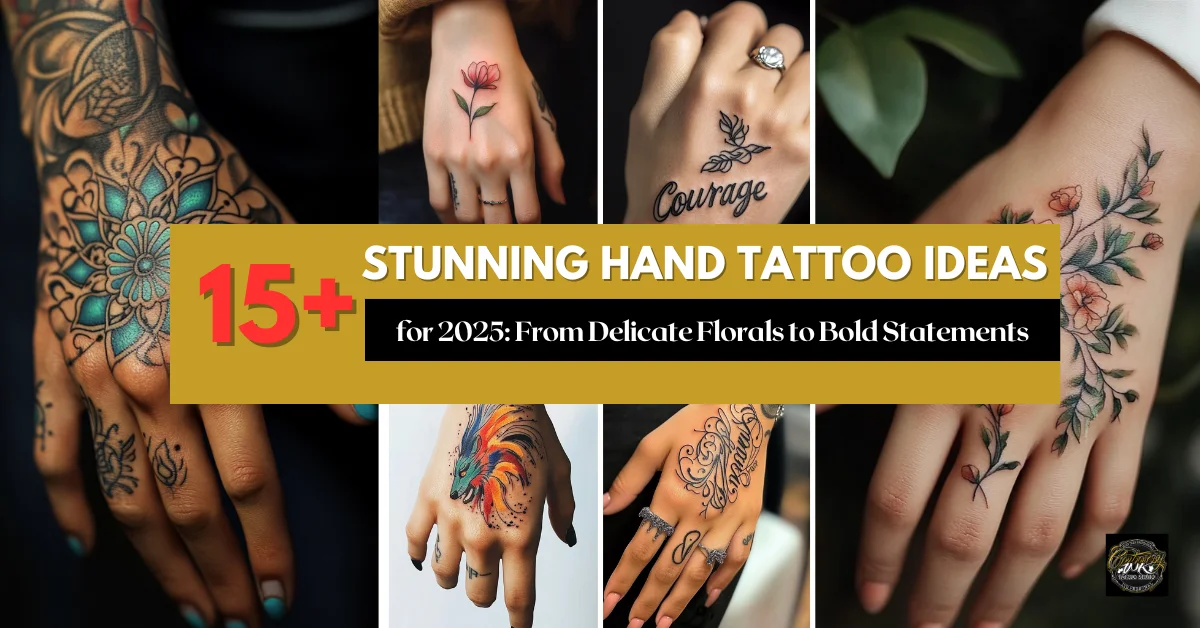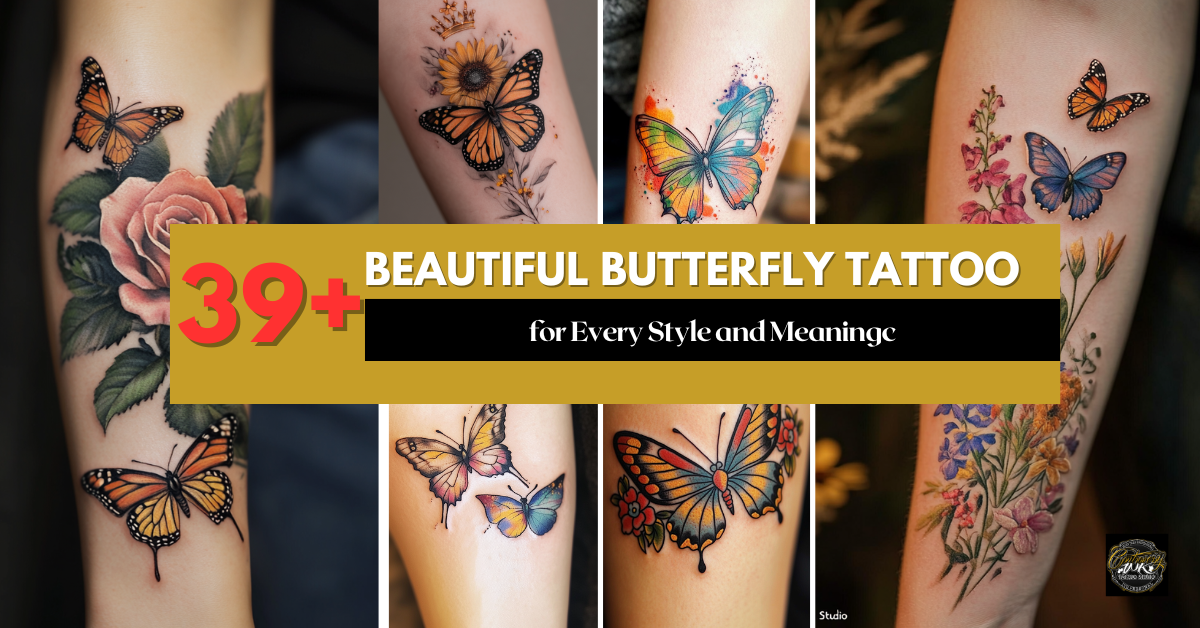If you buy through links on our site, we may earn a small affiliate commission to help support the blog - at no extra cost to you. It never influences our product selection process. Thank you!
Goth tattoos stand as powerful symbols of self-expression, delving into themes that many find both haunting and beautiful. These distinctive designs embrace mortality, explore our primal nature, and connect with the supernatural – offering a canvas for those drawn to the darker aesthetic.
Whether you’re fascinated by Gothic architecture, macabre imagery, or occult symbolism, these tattoos provide a unique way to showcase your individuality. From burning demons and twisted angels to ravens and skulls, each design carries profound meaning while challenging conventional beauty standards. Even something as simple as text can be transformed when rendered in the rare, distinctive Gothic font style.
The Gothic Aesthetic: Understanding the Dark Appeal of Goth Tattoos
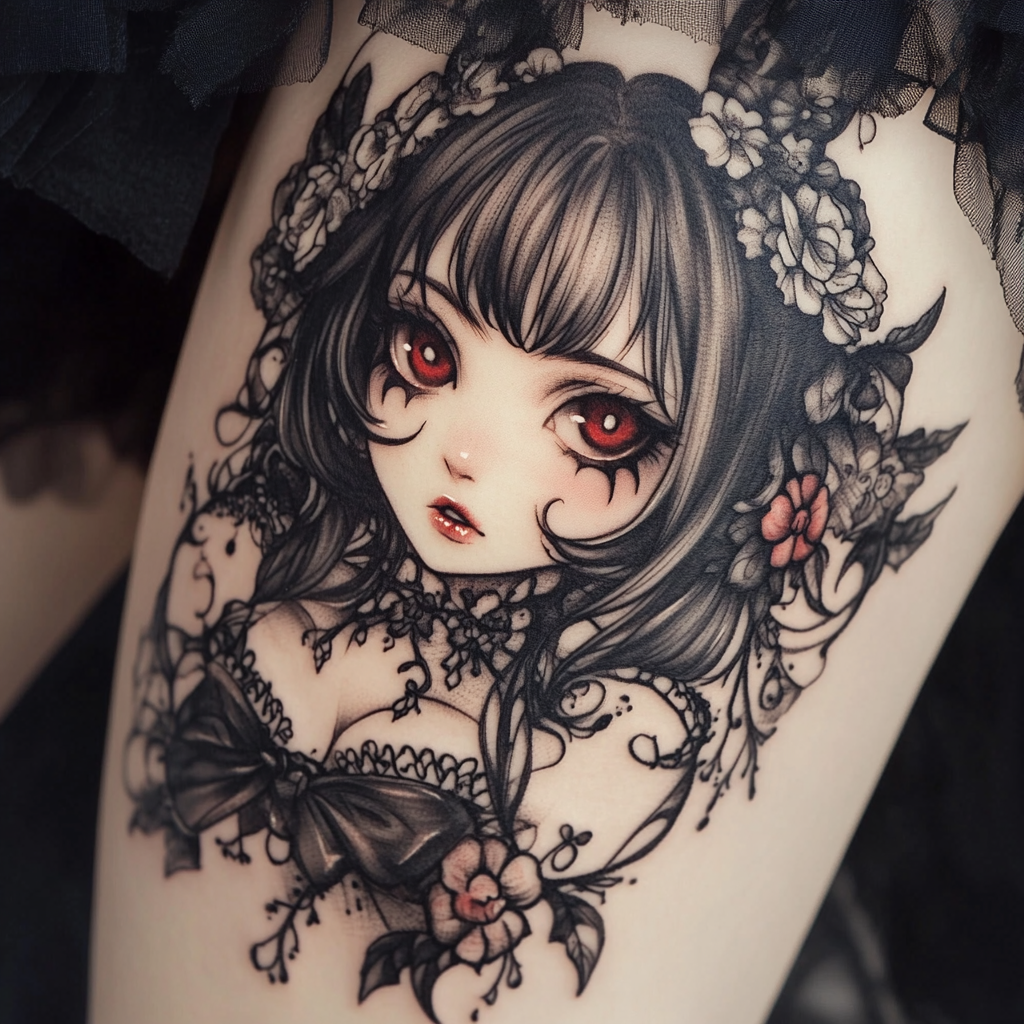
The goth subculture emerged in the 1980s with a distinct fascination for the dark, mysterious, and often romantic aesthetics. Goth tattoos embody this alternative spirit through powerful visual expressions that challenge mainstream beauty standards. They’re not just ink on skin—they’re statements of identity and windows into a unique perspective on life.
Origins of Gothic Influence in Tattoo Art
Gothic influence in tattoo art draws from multiple historical sources. Medieval Gothic architecture with its flying buttresses and stained glass windows inspires many designs. Victorian mourning culture, with its elaborate rituals and symbolism, provides another rich source of imagery. Horror literature and film have also shaped the aesthetic, contributing monsters and supernatural elements that appear in many goth tattoos.
Key Themes in Goth Tattoo Symbolism
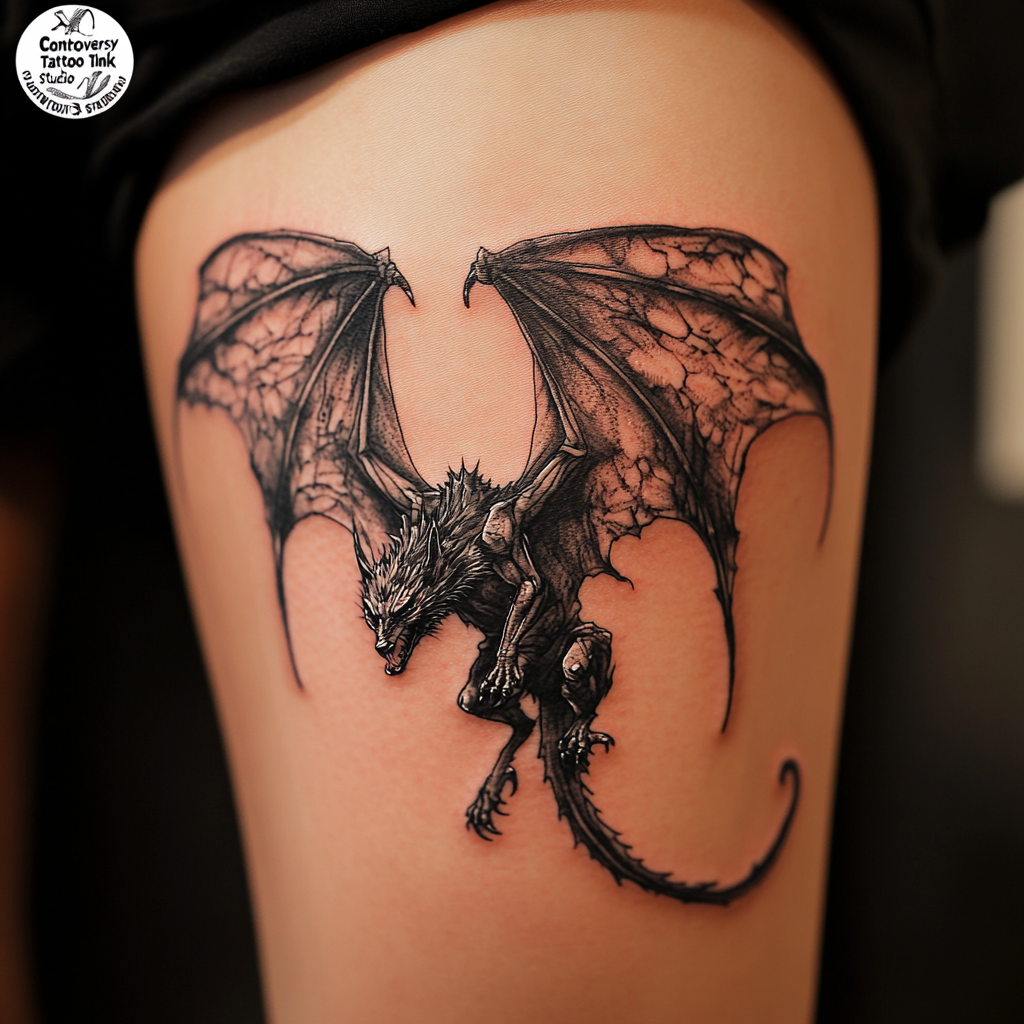
Goth tattoos embrace several recurring themes that resonate deeply with those drawn to this style:
- Mortality awareness – Skulls, tombstones, and memento mori symbols remind us of life’s impermanence
- Shadow self exploration – Dark creatures like bats, ravens, and wolves represent primal instincts
- Occult connections – Pentagrams, moons, and mystical symbols reflect interest in the supernatural
- Macabre appreciation – Gothic architecture, gargoyles, and historical elements celebrate darker traditions
- Romantic darkness – Roses with thorns, broken hearts, and poetic imagery blend beauty with pain
The Psychology Behind the Dark Appeal
People gravitate toward goth tattoos for deeply personal reasons. These designs often serve as expressions of individualism and nonconformity in a world that can feel restrictively mainstream. For many, embracing darker imagery provides a sense of empowerment and authentic self-expression. The goth aesthetic also creates community, connecting like-minded individuals who find beauty in the shadows.
Popular Placement for Maximum Impact
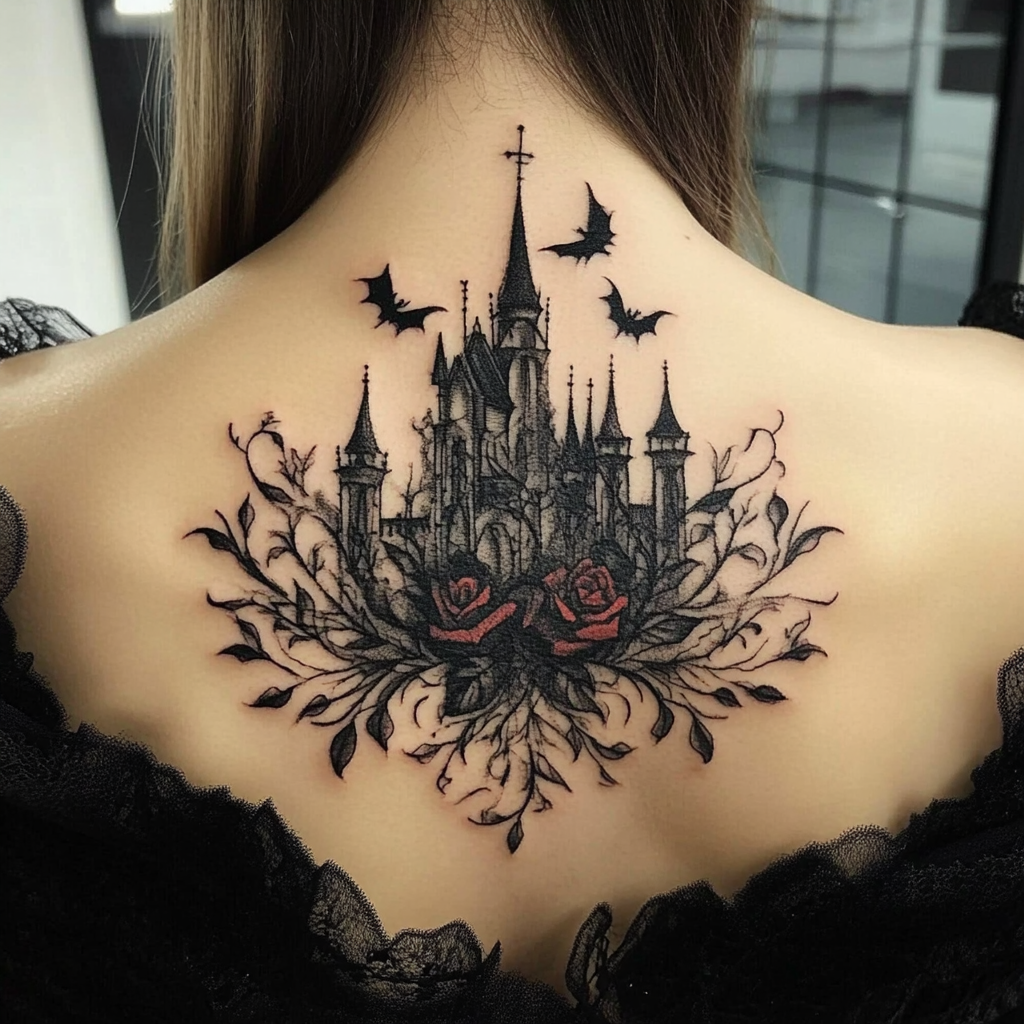
Where you place your goth tattoo can dramatically affect its visual impact:
- Forearms showcase intricate details and allow for daily visibility
- Back areas provide larger canvases for elaborate, dramatic scenes
- Chest placement creates intimate, personal statements
- Neck and throat positioning makes bold declarations
- Hands and fingers offer subtle yet noticeable canvas for smaller symbolic elements
Color Palettes That Define Gothic Tattoos
While black is the cornerstone of goth tattoo color schemes, many artists incorporate strategic color accents:
- Black and gray dominates with its classic, timeless appeal
- Deep red accents symbolize blood, passion, and intensity
- Muted purples add mystical, royal elements
- Metallic silver highlights create dimension and ethereal effects
- Selective white for contrast and highlighting important elements
Gothic tattoos aren’t just fashion statements—they’re deeply meaningful expressions that honor mortality, embrace complexity, and celebrate the beauty in darkness. For those drawn to this aesthetic, these tattoos provide a permanent connection to a rich cultural tradition that finds profound meaning in what others might consider macabre or unsettling.
Classic Gothic Tattoo Designs
Skulls and Skeletons

Skull tattoos stand as the quintessential symbol in gothic art, representing mortality while challenging our perception of life and death. These designs range from anatomically detailed craniums with intricate shading to stylized versions adorned with flowers or geometric elements. The contrast between white bone and black ink creates a striking visual impact that’s immediately recognizable as gothic. Many skull tattoos incorporate additional elements like hourglasses or clocks to emphasize the passage of time, making them perfect for those who embrace life’s temporary nature.
Ravens and Crows
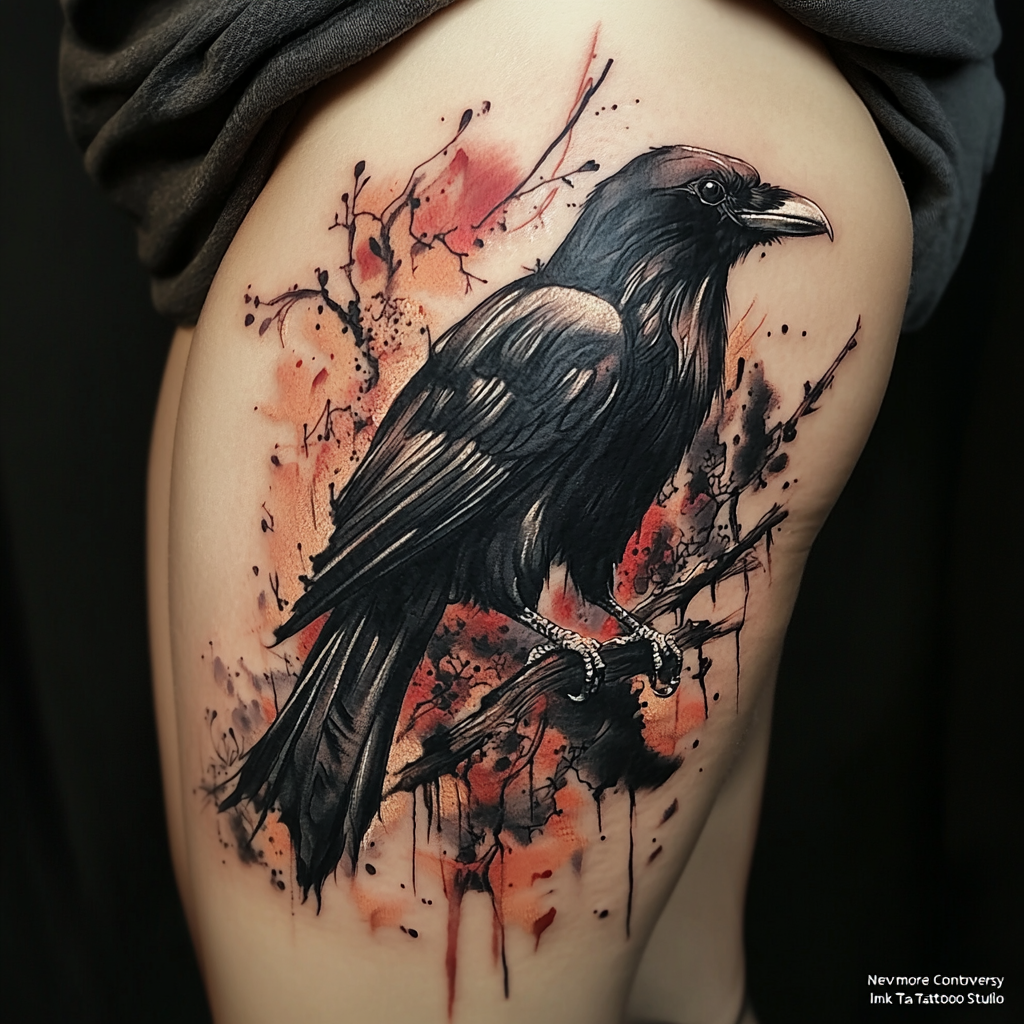
Ravens embody the mysterious allure of gothic aesthetics, serving as powerful symbols in both literature and art. These intelligent birds often represent prophecy, transformation, and the bridge between worlds in gothic tattoo designs. A detailed raven tattoo with feathers rendered in deep black ink creates an unmistakable gothic statement, whether perched on a branch or captured mid-flight. The symbolism runs deeper for many enthusiasts, with ravens often representing grief over lost love or serving as messengers from beyond—directly referencing Edgar Allan Poe’s famous line “Nevermore” that’s become synonymous with gothic literature.
Black Roses and Gothic Florals
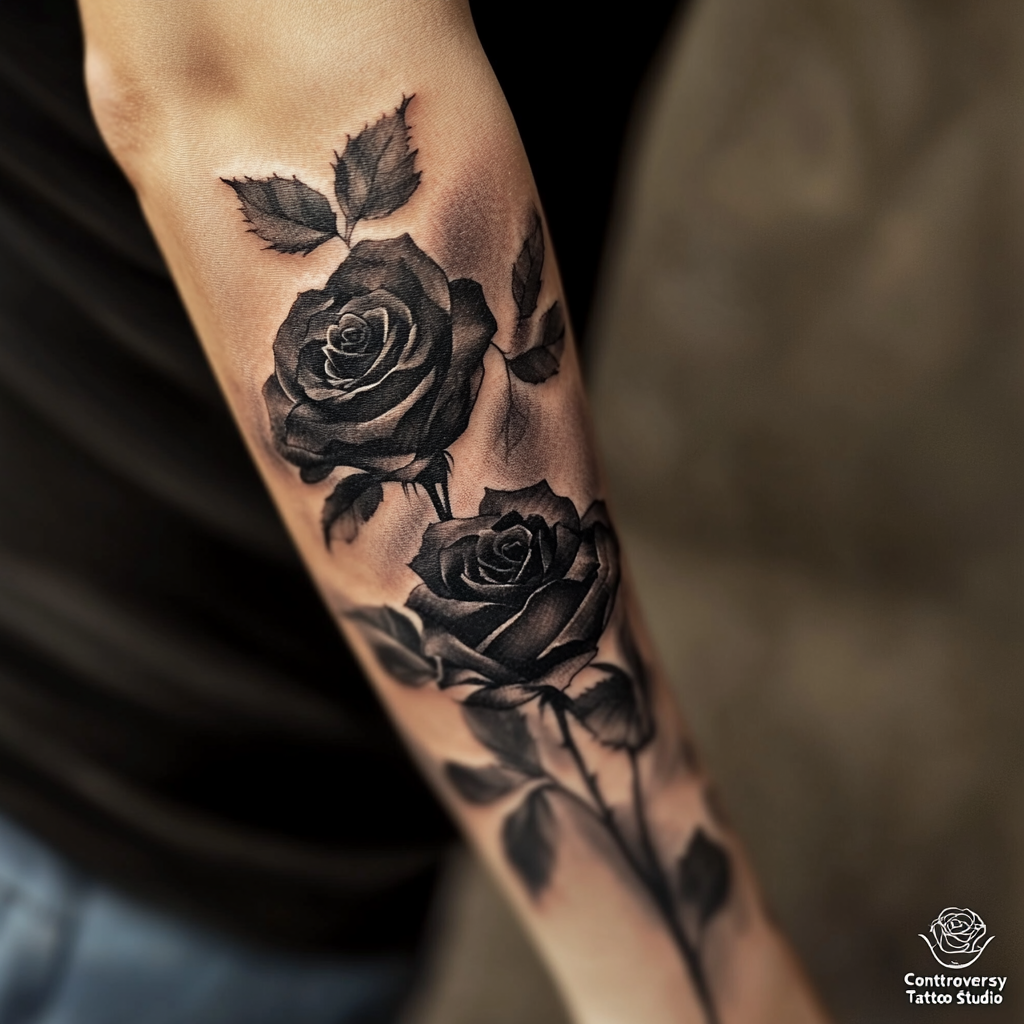
Gothic floral tattoos transform nature’s beauty into hauntingly dark art pieces that speak to the duality of existence. Black roses stand as the most iconic gothic floral symbol, representing both love and mourning simultaneously. These designs often feature roses with thorns prominently displayed, sometimes dripping blood or intertwined with other gothic elements like skulls or spiderwebs. Gothic floral tattoos frequently symbolize decay and mortality, with withered petals or flowers growing from skeletal remains. The combination creates a powerful visual metaphor that captures the essence of gothic art—finding beauty in darkness and celebrating the inevitable cycle of growth and decay.
Gothic Symbols and Mythology
Gothic tattoos draw deeply from rich symbolic traditions that span centuries of mystical and occult history. These powerful designs connect wearers to ancient beliefs while making bold statements about personal identity.
Pentagrams and Occult Imagery
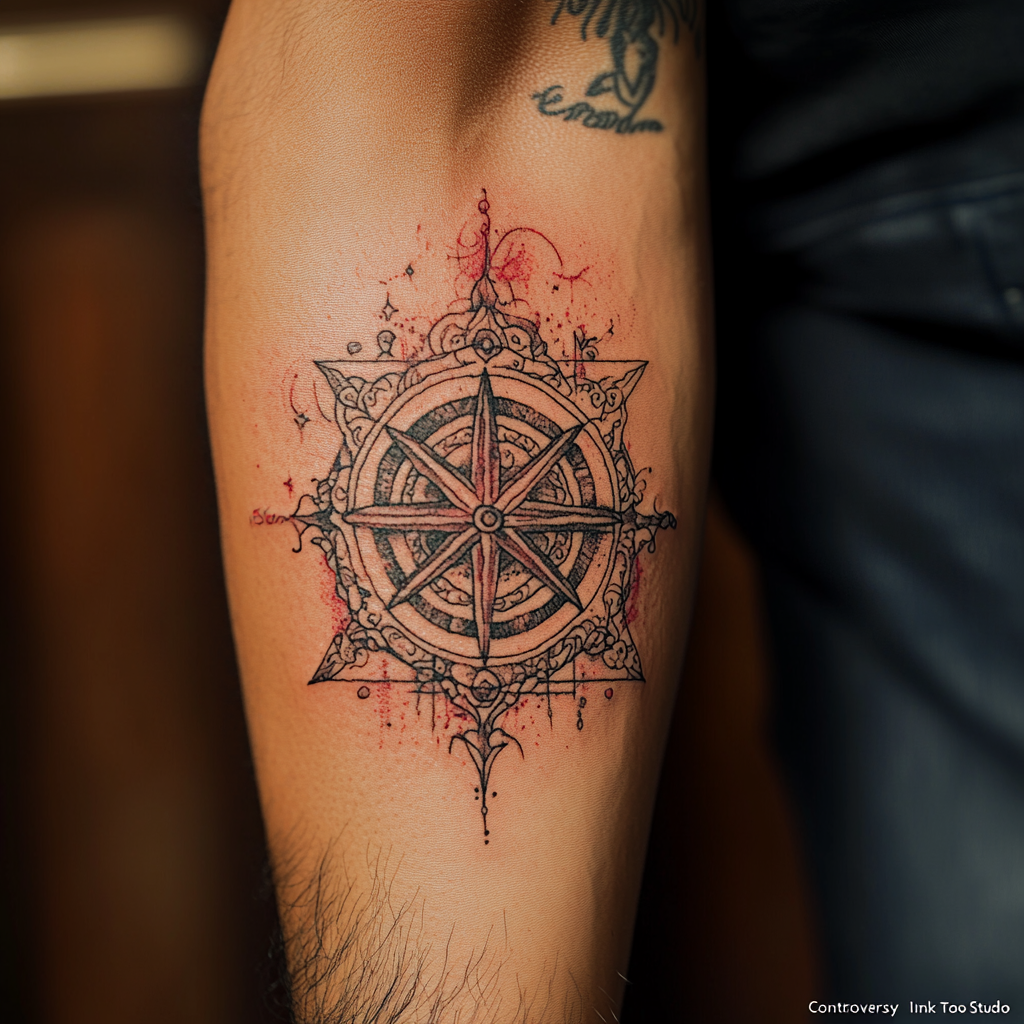
Pentagrams stand as one of the most recognizable symbols in gothic tattoo art, representing the five elements and cosmic balance. These five-pointed stars enclosed in circles have adorned bodies of those connected to pagan traditions and modern gothic aesthetics alike. When incorporated into tattoos, pentagrams often feature intricate details like moon phases, alchemical symbols, or sacred geometry that enhance their mystical significance. The inverted pentagram creates an especially dramatic statement piece, embracing the subversive nature that many goth enthusiasts celebrate.
Other occult imagery popular in gothic tattoos includes alchemical symbols that transform ordinary ink into magical statements. Ancient sigils, representing specific spiritual intentions, make for minimalist yet meaningful designs that speak to those in the know. Tarot imagery—particularly The Moon, Death, and The Tower cards—translates beautifully to skin art with their rich symbolism of transformation and hidden knowledge.
Bats and Creatures of the Night

Bat tattoos embody the essence of gothic sensibility, celebrating creatures that thrive in darkness. These nocturnal mammals appear in gothic designs ranging from realistic portrayals to stylized silhouettes, often incorporated with moons, stars, or Gothic architecture. The bat represents transformation, intuition, and rebirth—themes central to gothic ideology. Designs featuring bats in flight across the forearm or shoulder blade create dynamic pieces that capture their mysterious nature.
Beyond bats, other night creatures feature prominently in gothic tattoo art. Spiders weaving intricate webs symbolize patience, creativity, and fate’s complex designs. Moths drawn to flame represent the attraction to dangerous beauty and the transformative power of darkness. Black cats, traditional symbols of mystery and magic, make particularly striking tattoos when depicted with glowing eyes or surrounded by supernatural elements. These creatures of the night connect wearers to the primal aspects of existence that flourish beyond daylight’s boundaries.
Supernatural Entities
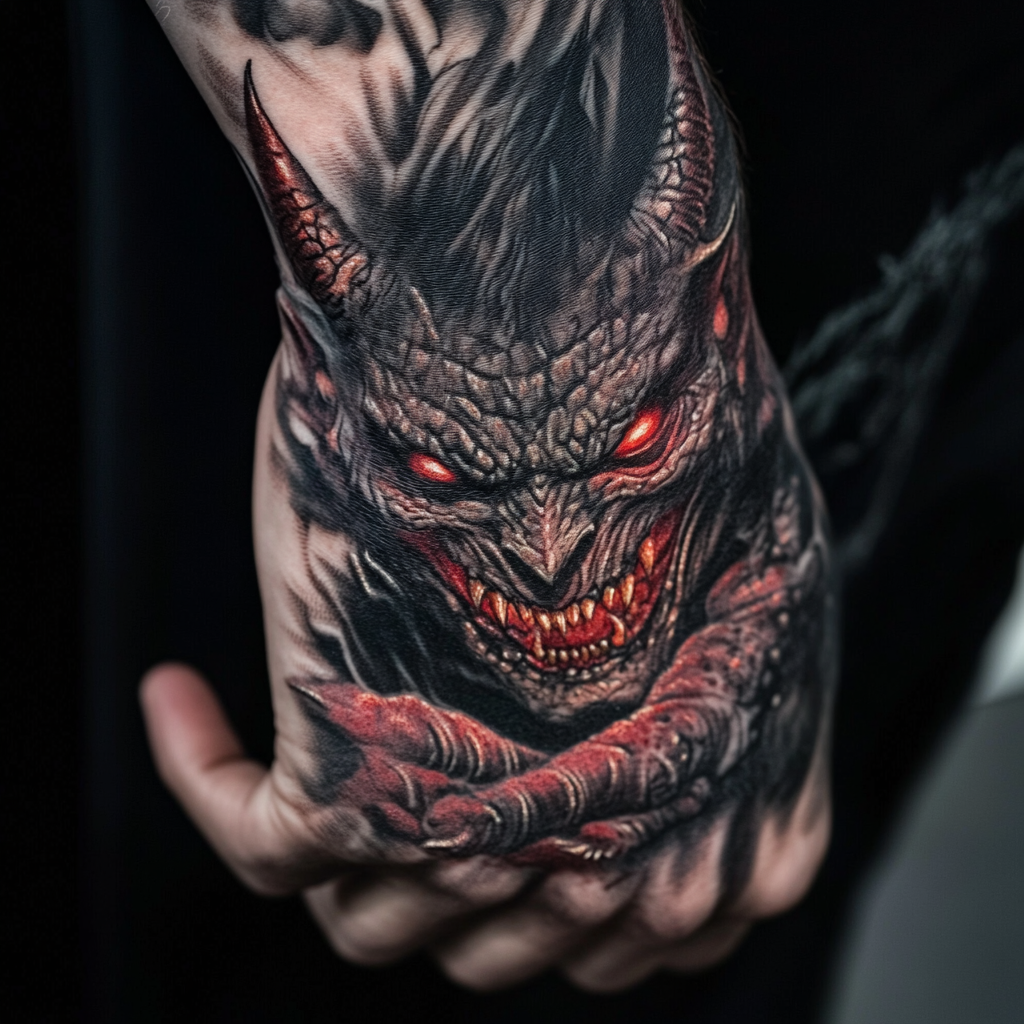
Demon tattoos explore the shadow aspects of mythology with striking visual impact. These supernatural beings appear in gothic art through elaborate full-sleeve designs featuring horned figures emerging from smoke or more subtle nods to demonic presence through glowing eyes or clawed hands. Far from simply representing evil, these tattoos often symbolize rebellion against conformity and embrace of one’s complete self—including darker impulses.
Angels in gothic tattoo art rarely resemble cherubic heavenly messengers. Instead, they appear as fallen or battle-worn entities with tattered wings, broken halos, or tears of blood. These designs reflect the complexity of divine beings and often represent protection despite flaws or suffering. The contrast between light and shadow in these tattoos creates visually striking pieces that embody the gothic appreciation for beauty within darkness.
Ghost tattoos capture the thin veil between worlds that gothic aesthetics frequently explore. Whether depicted as translucent figures floating through architecture or more abstract representations using negative space techniques, these supernatural entities represent memory, grief, and the persistence of consciousness beyond death. Their ethereal quality makes them particularly suited for placement on areas like the ribcage or upper back, where they seem to emerge from within the wearer.
Gothic Architecture Inspired Tattoos
Gothic architecture, with its dramatic spires, intricate stonework, and haunting beauty, provides perfect inspiration for tattoos that embody the gothic aesthetic. These designs capture centuries of dark romanticism and spiritual mystery through detailed architectural elements.
Gothic Cathedrals and Windows
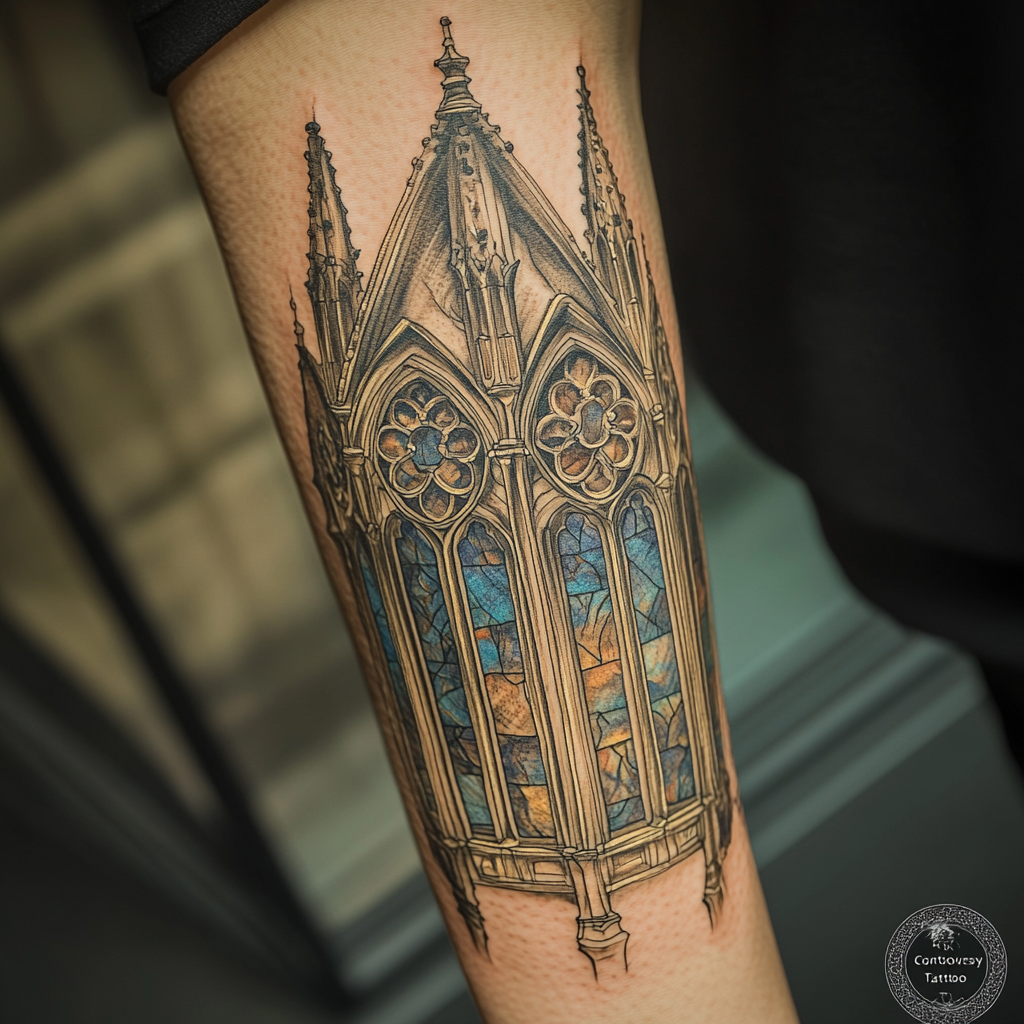
Gothic cathedral tattoos transform your body into a canvas for medieval magnificence. These designs feature soaring spires, flying buttresses, and rose windows that create an impression of otherworldly grandeur. A cathedral silhouette on your forearm or back makes a dramatic statement about your appreciation for gothic aesthetics while connecting to themes of spirituality and reverence.
Stained glass window tattoos bring vibrant color to gothic designs, creating striking contrast against traditional black ink. These tattoos showcase pointed arches and delicate tracery characteristic of gothic architecture, often incorporating religious imagery or geometric patterns. A small stained glass design on your wrist or a full back piece depicting an entire cathedral window can both capture the essence of gothic beauty through these intricate, luminous compositions.
Gargoyles and Stone Elements
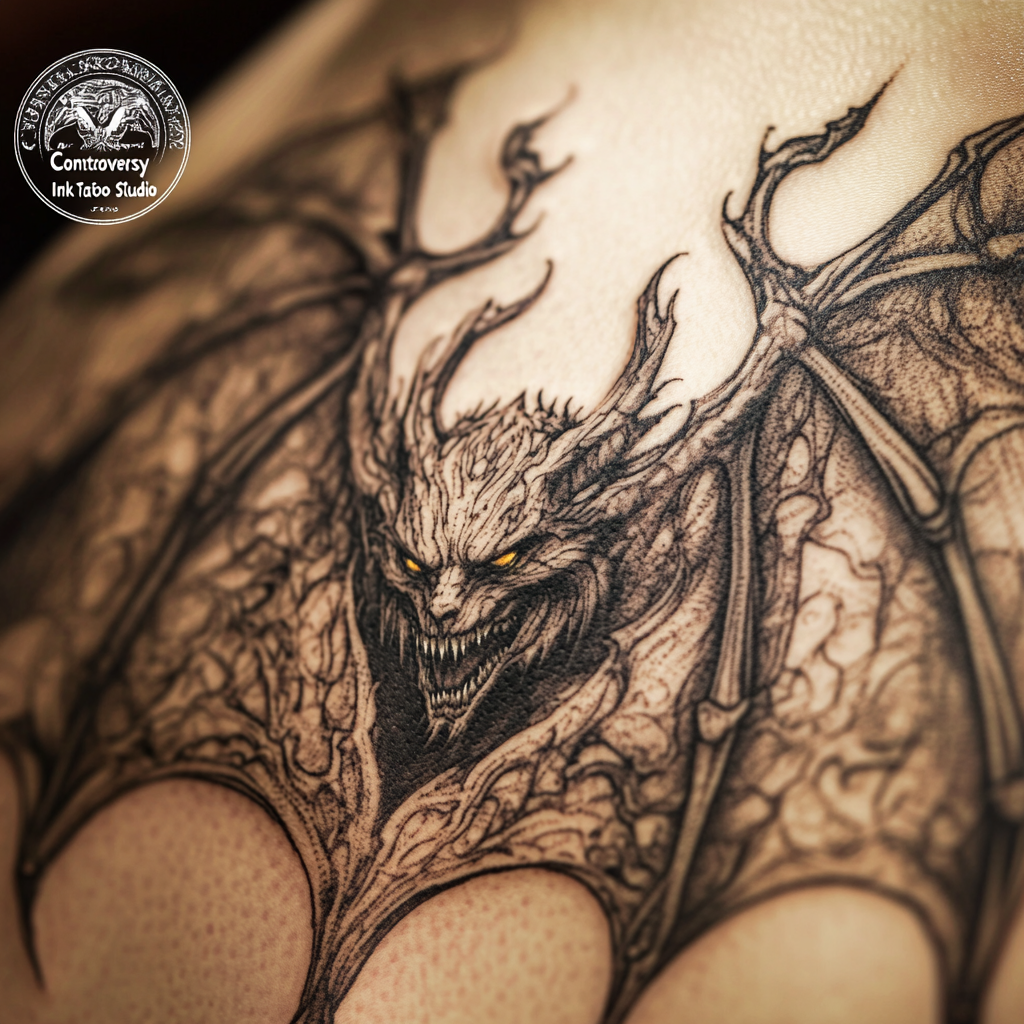
Gargoyle tattoos embody the perfect fusion of protection and menace that defines gothic architecture. These grotesque stone guardians were originally designed to ward off evil spirits while functioning as water spouts on medieval cathedrals. A gargoyle tattoo on your shoulder or chest serves as your personal protective talisman while showcasing the macabre artistry that makes gothic style so distinctive.
Stone element tattoos feature the decorative details that make gothic architecture so visually rich. Quatrefoils, trefoils, and elaborate stone tracery translate beautifully to tattoo art, offering geometric precision with gothic flair. These architectural motifs work exceptionally well as bands around arms or as frame elements for larger gothic designs. The detailed stonework patterns create texture and dimension that brings authentic gothic style to your tattoo, connecting you to centuries of artistic tradition through these timeless architectural features.
Gothic Portrait Tattoos
Gothic portrait tattoos capture the essence of darkness through haunting human visages. These designs elevate typical portraits into something more mysterious and deeply evocative.
Gothic Angels and Fallen Angels
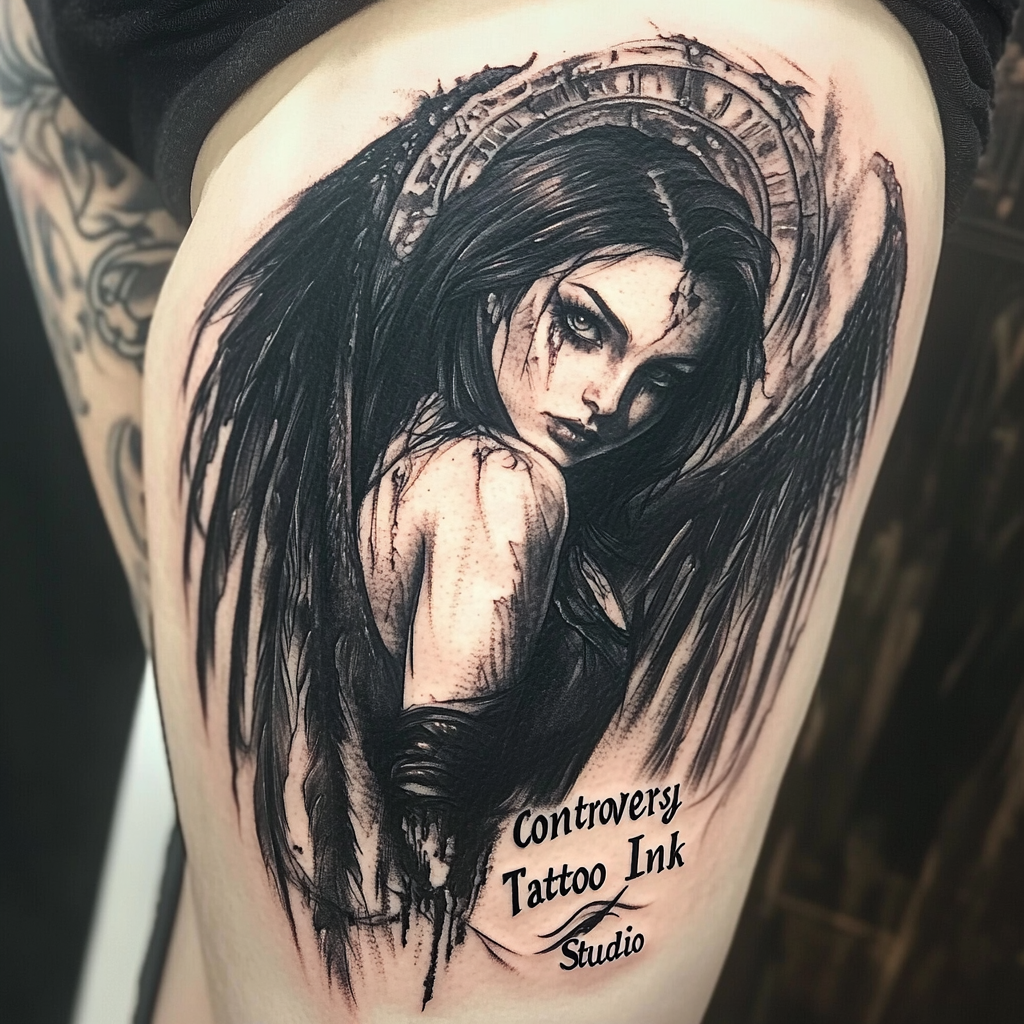
Gothic angel tattoos beautifully capture the duality of celestial beings, whether they’re still serving divine purposes or have fallen from grace. Angel designs in gothic tattoo art typically feature dramatic contrast between light and shadow, with intricate wings that can span across your back or shoulder blade. Fallen angels appear with tattered wings, darkened halos, or chains, symbolizing rebellion and the complexity of morality.
These tattoos often incorporate elements like Gothic architecture in the background, creating depth and historical context. The faces of gothic angels typically display a haunting beauty—with hollow eyes, sharp features, and expressions that convey both sorrow and wisdom. Many designs show angels weeping or in contemplative poses, reflecting the weight of immortality and divine responsibility.
For a truly striking piece, consider a fallen angel design with raven feathers incorporated into the wings or a gothic angel emerging from darkness with selective red accents that symbolize sacrifice or passion. These tattoos work exceptionally well as large back pieces or detailed sleeves where the artistry can fully develop.
Ethereal Gothic Figures

Ethereal gothic figure tattoos portray mysterious beings that exist between worlds. These designs feature ghostly women with flowing hair, translucent skin, and eyes that seem to peer into other realms. The figures often appear to be floating or dissolving into mist, creating a sense of impermanence and supernatural presence.
Artists typically render these ethereal figures using fine line work and subtle shading to create an almost transparent quality. Many designs incorporate elements like flowing fabric, delicate chains, or cosmic motifs that enhance the otherworldly appearance. Victorian-inspired clothing details such as high collars, corsets, and ornate jewelry add historical depth to these haunting portraits.
Placement for ethereal gothic figures works beautifully on forearms, upper arms, or thigh areas where the design can flow with your body’s natural contours. The most striking designs often use negative space cleverly, allowing parts of the figure to fade into your skin. For a truly captivating piece, consider ethereal gothic figures surrounded by moths, stars, or phases of the moon that symbolize transformation and the passage between worlds.
Modern Gothic Tattoo Trends
The gothic aesthetic continues to evolve, embracing contemporary artistic approaches while maintaining its dark allure. Today’s gothic tattoo trends blend traditional macabre elements with modern techniques and minimalist sensibilities, creating pieces that are both timeless and fresh.
Minimalist Gothic Designs
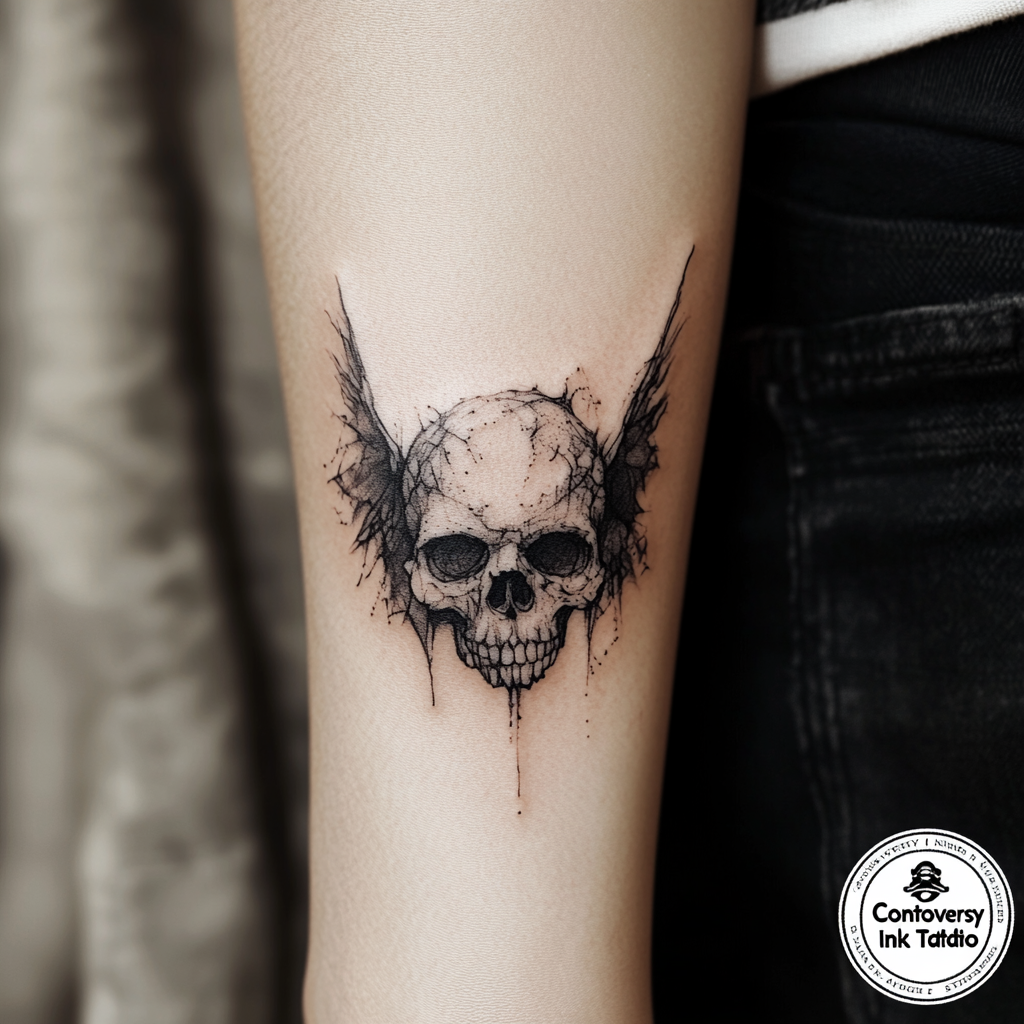
Minimalist gothic tattoos strip down the traditionally ornate aesthetic to its essential elements, creating powerful imagery with fewer lines. These designs focus on clean execution and negative space to convey gothic themes without overwhelming detail. A simple skull outline with minimal shading or a delicate line-art raven can make just as strong a statement as more elaborate pieces. The beauty of minimalist gothic tattoos lies in their ability to distill complex themes of mortality and darkness into elegant, understated designs that work well even in smaller placements like wrists or ankles. Artists use precise linework and strategic placement of black ink to create striking silhouettes against the skin, proving that gothic beauty doesn’t require extensive detail to make an impact.
Geometric Gothic Elements

Geometric gothic tattoos merge the ancient precision of sacred geometry with classic gothic imagery, creating mesmerizing designs that feel both traditional and futuristic. These tattoos incorporate triangles, circles, hexagons, and other geometric shapes into gothic elements like skulls, bats, or cathedral windows. The structured approach adds a contemporary edge to gothic iconography, appealing to those who appreciate mathematical precision alongside dark aesthetics. Artists often create striking visual effects by breaking down gothic imagery into geometric components, adding dimension through dotwork and precise angles. The result is a modern interpretation of gothic themes that maintains the subculture’s dark mystique while introducing a level of symmetry and order that creates visually captivating designs perfect for forearms, shoulder caps, or chest pieces.
Gothic Placement Ideas
Gothic Neck and Hand Tattoos

Neck and hand tattoos make bold statements in the gothic aesthetic, instantly visible and impossible to ignore. Neck placements offer a canvas for haunting designs that peek above clothing collars, creating an air of mystery. The side of the neck works beautifully for vertical designs like Gothic cathedrals or elongated supernatural creatures, while the front throat area can showcase symmetrical motifs like spiderwebs or pentagrams.
Hand tattoos have become increasingly popular in the gothic community, with intricate designs that transform ordinary gestures into macabre displays. Finger tattoos featuring Gothic lettering, tiny skulls, or occult symbols allow for personalized expressions that reveal themselves during everyday interactions. The back of the hand provides space for more elaborate designs like smokey horror-inspired line work created through negative shading, perfectly capturing the eerie essence of gothic art. For maximum impact, consider hand tattoos that extend partially onto the wrist, creating the illusion of emerging darkness.
Gothic Sleeves and Back Pieces
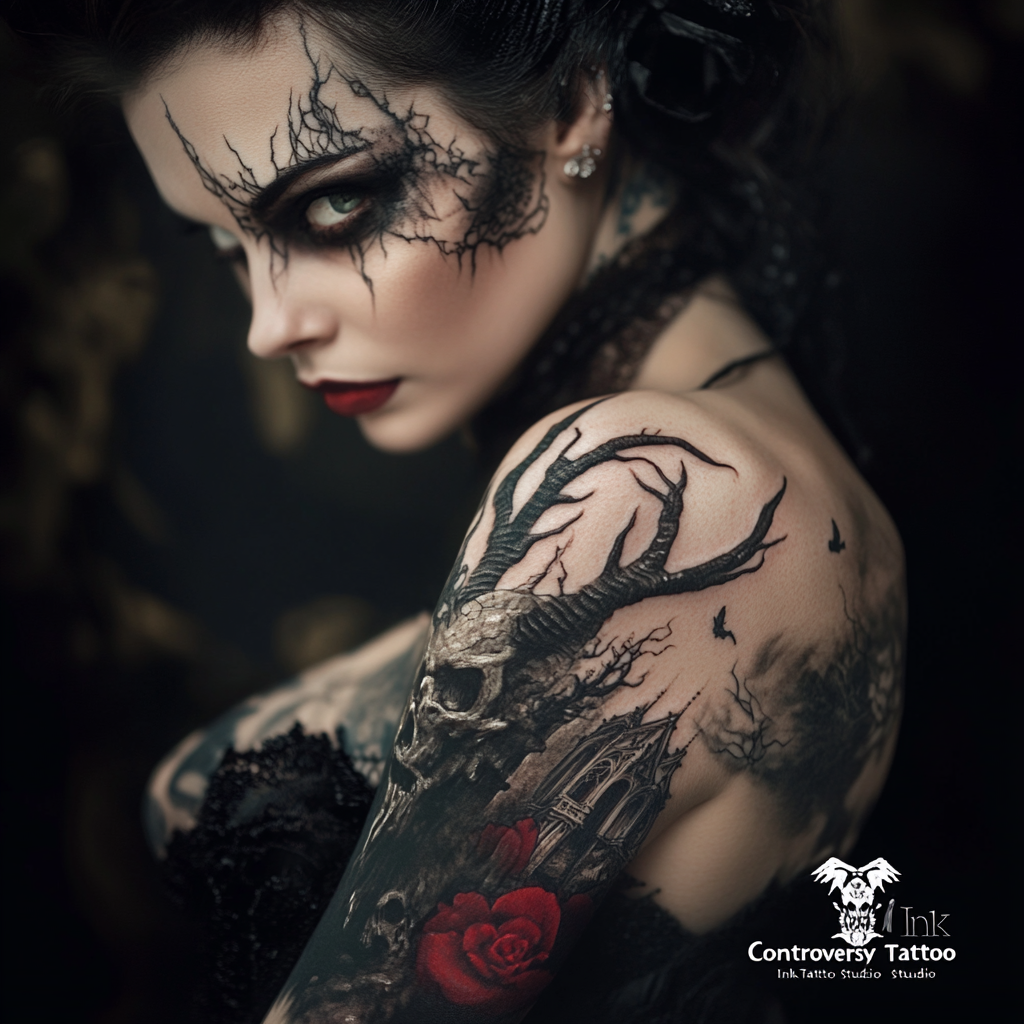
Sleeve tattoos offer an expansive canvas for telling darker stories through gothic imagery. An upper-sleeve featuring a gothic figure with deeply shaded features, animal horns, and tear-like streaks creates a powerful emotional expression. Full sleeves can incorporate multiple gothic elements flowing together—perhaps starting with a haunting portrait near the shoulder that transitions into Gothic architecture and ends with occult symbols at the wrist.
Back pieces provide the ultimate canvas for elaborate gothic masterpieces that can incorporate grand scenes from Gothic literature or mythology. The broad space allows for dramatic cathedral landscapes, complete with flying buttresses and gargoyles, or expansive supernatural scenarios featuring angels and demons. The upper back works particularly well for symmetrical designs like bat wings extending across the shoulder blades, while the lower back can showcase dark florals intertwined with skulls and spiderwebs. The spine offers a natural central line for vertical designs like Gothic columns or a series of vertebrae transformed into architectural elements, beautifully merging human anatomy with Gothic aesthetics.
Finding the Right Artist for Your Gothic Tattoo
Research Artists Specializing in Gothic Style
Your gothic tattoo’s quality depends entirely on finding an artist who understands the dark aesthetic you’re seeking. Start by researching tattoo artists who specialize in gothic or macabre designs. Look through online portfolios, Instagram accounts, and tattoo studio websites to find artists whose work resonates with your vision. Pay special attention to their line work, shading techniques, and how they handle dark themes. Artists experienced in gothic tattoos will understand the importance of contrast, intricate details, and the emotional weight these designs carry.
Review Their Portfolio Thoroughly
When you’ve identified potential artists, examine their portfolios with a critical eye. Look for examples of gothic elements like skulls, ravens, architecture, or occult symbols. Notice how they execute fine details that are crucial for gothic tattoos—like the delicate lines in stained glass patterns or the subtle shading that brings dimension to a skull. A skilled gothic tattoo artist will have mastered the balance between darkness and negative space, creating designs that are haunting yet clear and defined.
Schedule a Consultation
Before committing to an artist, schedule a consultation to discuss your ideas. During this meeting, observe how the artist responds to your concept. A good gothic tattoo artist won’t just nod along—they’ll ask questions about symbolism important to you and offer suggestions to enhance the design’s impact. They should be able to explain how they’ll approach technical challenges specific to gothic imagery, such as creating depth in architectural elements or achieving the right balance in occult symbols.
Discuss Technical Expertise
Gothic tattoos often require specific technical skills that not all artists possess. During your consultation, ask about their experience with techniques relevant to your design. For detailed gothic architecture, you’ll need someone skilled in fine linework. For dark, moody pieces with dimensional skulls or creatures, look for artists who excel at black and gray shading. If you want elements of color—like blood-red accents or stained glass effects—ensure they have experience with color theory and application within gothic designs.
Consider Their Understanding of Gothic Symbolism
The best gothic tattoo artists understand the rich history and symbolism behind the aesthetic. Talk with potential artists about what draws them to gothic imagery and gauge their knowledge of gothic literature, architecture, or subculture. An artist who appreciates the deeper meanings behind gothic symbols—whether it’s the mortality represented by skulls or the spiritual significance of cathedral elements—will create a more authentic and meaningful tattoo that truly captures the gothic spirit you’re seeking.
Check Their Hygiene and Safety Practices
While aesthetics are paramount for gothic tattoos, safety should never be compromised. Visit the studio in person to assess its cleanliness. A professional tattoo artist will work in a sterile environment, use new needles for each client, and follow proper sanitization procedures. This is especially important for gothic tattoos, which often feature detailed work that requires extended sessions. Ask about their aftercare recommendations, particularly for larger gothic pieces that might require special attention during healing.
Trust Your Instinct
Finally, trust your intuition when selecting an artist for your gothic tattoo. You should feel comfortable communicating with them and confident in their ability to bring your vision to life. The right artist will respect your ideas while offering valuable input based on their expertise. Remember that gothic tattoos often express deeply personal themes of mortality, spirituality, or individuality—you deserve an artist who honors the significance of your design choice and approaches it with the appropriate reverence and skill.
Aftercare Tips for Your Dark Masterpiece
Your gothic tattoo isn’t just body art—it’s a deeply personal statement that connects you to centuries of dark aesthetics and symbolism. As you wear your macabre masterpiece proudly you join a community that finds beauty in the shadows and meaning in mortality.
Whether you’ve chosen haunting architecture ravens or occult symbols your tattoo serves as both personal talisman and public declaration of your unique perspective. The gothic aesthetic continues to evolve while staying rooted in its rich cultural heritage.
Remember that your tattoo is more than ink—it’s a permanent embodiment of your journey through darkness and light. By embracing these powerful symbols you’re carrying forward an artistic tradition that celebrates the complexity of existence and finds profound beauty in what others might fear.
Frequently Asked Questions
What makes a tattoo “goth”?
Goth tattoos incorporate elements like macabre imagery, Gothic architecture, occult symbolism, and dark themes. They typically feature motifs such as skulls, ravens, supernatural entities, and Gothic fonts. These tattoos explore mortality, the primal nature of existence, and supernatural elements while challenging traditional beauty standards. The distinctive black and gray color palette with strategic color accents further defines the gothic aesthetic.
What are the origins of goth tattoo style?
Goth tattoo style emerged alongside the goth subculture in the 1980s but draws inspiration from much older sources. Its aesthetic influences include medieval Gothic architecture, Victorian mourning culture, and classic horror literature. The style embodies a fascination with dark romanticism and the beautiful aspects of melancholy, creating visual expressions that honor these historical connections while evolving with contemporary artistic techniques.
What symbolism is common in goth tattoos?
Common symbols in goth tattoos include skulls and skeletons (representing mortality), ravens and crows (symbolizing prophecy and transformation), black roses (representing love and mourning), pentagrams and occult imagery (connecting to mysticism), and supernatural entities like demons and angels. Gothic architecture elements such as cathedral silhouettes, stained glass windows, and gargoyles are also frequently incorporated to evoke spiritual mystery.
Where are goth tattoos typically placed?
Goth tattoos are often strategically placed for maximum visual impact. Popular locations include the neck (for haunting designs that peek above clothing), hands (transforming ordinary gestures into macabre displays), sleeves (providing expansive canvas for gothic storytelling), and the back (allowing for large-scale, detailed compositions). The placement often enhances the dramatic effect and personal meaning of the tattoo.
What colors are used in gothic tattoos?
Gothic tattoos primarily use black and gray as their foundation, creating depth through shading techniques. Strategic color accents may be incorporated for specific elements, with deep reds suggesting blood or passion, purples conveying mystery or royalty, and midnight blues adding depth. Some gothic tattoos, especially those inspired by stained glass windows, might incorporate vibrant jewel tones while maintaining the overall dark aesthetic.
How are modern gothic tattoos evolving?
Modern gothic tattoos blend traditional macabre elements with contemporary artistic approaches. Current trends include minimalist gothic designs that use clean execution and negative space, geometric gothic tattoos that merge sacred geometry with classic gothic imagery, and neo-traditional interpretations that add vibrant colors to gothic themes. These evolutions maintain the subculture’s dark mystique while introducing a fresh, contemporary edge.
What do skulls symbolize in gothic tattoos?
In gothic tattoos, skulls symbolize more than just mortality—they represent an awareness of life’s impermanence and challenge conventional perceptions of death. Rather than being purely morbid, skull tattoos often celebrate the beauty in acknowledging our finite existence. They can represent transformation, the shedding of old identities, and serve as a memento mori (“remember you must die”), encouraging the wearer to live authentically.
How do I find the right artist for a gothic tattoo?
Find an artist specializing in gothic styles by researching portfolios that demonstrate experience with dark imagery, intricate details, and the appropriate aesthetic. Schedule consultations to discuss your ideas and gauge their understanding of gothic symbolism. Ensure they maintain proper hygiene and safety practices. Most importantly, trust your instincts—the right artist should respect your vision while offering valuable creative input to enhance your gothic tattoo.
What do supernatural creatures represent in gothic tattoos?
In gothic tattoos, supernatural creatures embody complex symbolism beyond simple good and evil. Demons often represent the shadow self or suppressed desires, while angels can symbolize protection or spiritual guidance. Ghosts reflect memory and consciousness beyond death. Creatures like bats and spiders represent transformation and primal aspects of existence. These beings allow wearers to explore the boundaries between worlds and the complexity of human nature.
Can gothic tattoos be subtle or minimalist?
Yes, gothic tattoos can absolutely be subtle and minimalist. Contemporary approaches include fine-line work, small symbolic elements (like tiny ravens or crescent moons), and simplified architectural motifs. Minimalist gothic designs focus on clean execution and strategic use of negative space while still conveying gothic themes. These understated tattoos maintain the essence of gothic aesthetics while being appropriate for professional environments or personal preference for subtlety.
